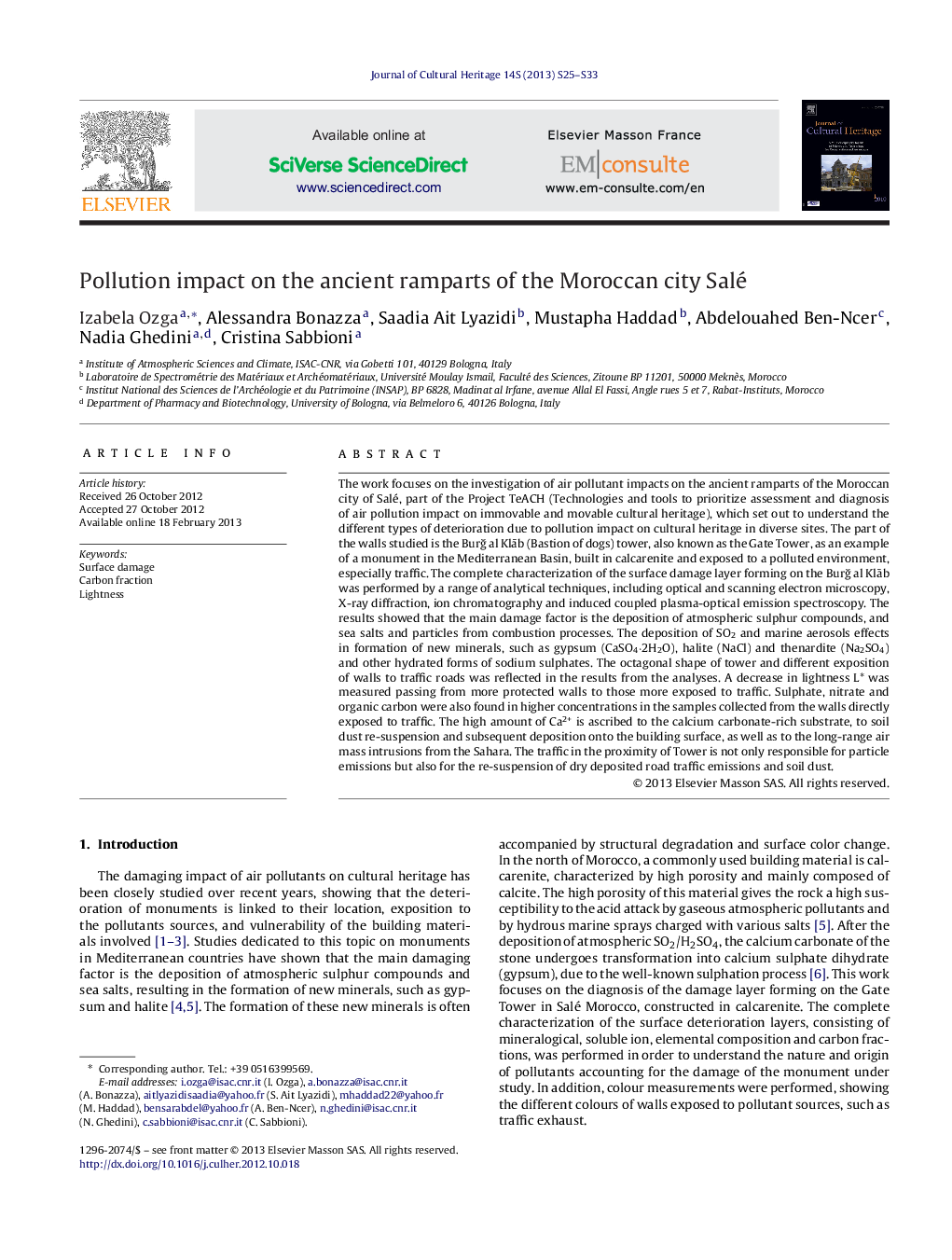| Article ID | Journal | Published Year | Pages | File Type |
|---|---|---|---|---|
| 1038094 | Journal of Cultural Heritage | 2013 | 9 Pages |
Abstract
The work focuses on the investigation of air pollutant impacts on the ancient ramparts of the Moroccan city of Salé, part of the Project TeACH (Technologies and tools to prioritize assessment and diagnosis of air pollution impact on immovable and movable cultural heritage), which set out to understand the different types of deterioration due to pollution impact on cultural heritage in diverse sites. The part of the walls studied is the BurÄ al KlÄb (Bastion of dogs) tower, also known as the Gate Tower, as an example of a monument in the Mediterranean Basin, built in calcarenite and exposed to a polluted environment, especially traffic. The complete characterization of the surface damage layer forming on the BurÄ al KlÄb was performed by a range of analytical techniques, including optical and scanning electron microscopy, X-ray diffraction, ion chromatography and induced coupled plasma-optical emission spectroscopy. The results showed that the main damage factor is the deposition of atmospheric sulphur compounds, and sea salts and particles from combustion processes. The deposition of SO2 and marine aerosols effects in formation of new minerals, such as gypsum (CaSO4·2H2O), halite (NaCl) and thenardite (Na2SO4) and other hydrated forms of sodium sulphates. The octagonal shape of tower and different exposition of walls to traffic roads was reflected in the results from the analyses. A decrease in lightness L* was measured passing from more protected walls to those more exposed to traffic. Sulphate, nitrate and organic carbon were also found in higher concentrations in the samples collected from the walls directly exposed to traffic. The high amount of Ca2+ is ascribed to the calcium carbonate-rich substrate, to soil dust re-suspension and subsequent deposition onto the building surface, as well as to the long-range air mass intrusions from the Sahara. The traffic in the proximity of Tower is not only responsible for particle emissions but also for the re-suspension of dry deposited road traffic emissions and soil dust.
Related Topics
Physical Sciences and Engineering
Chemistry
Physical and Theoretical Chemistry
Authors
Izabela Ozga, Alessandra Bonazza, Saadia Ait Lyazidi, Mustapha Haddad, Abdelouahed Ben-Ncer, Nadia Ghedini, Cristina Sabbioni,
